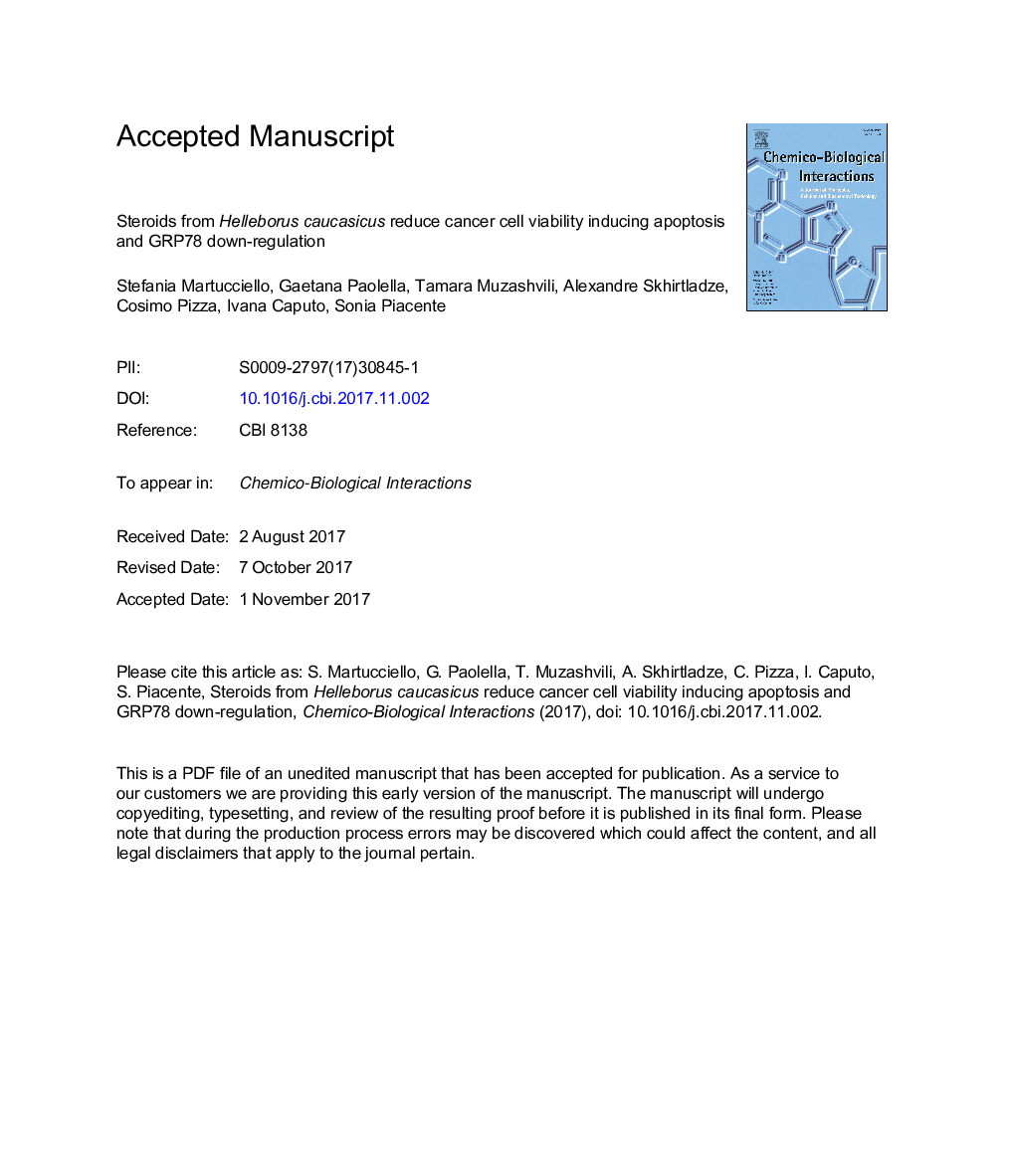| Article ID | Journal | Published Year | Pages | File Type |
|---|---|---|---|---|
| 8545298 | Chemico-Biological Interactions | 2018 | 26 Pages |
Abstract
Helleborus caucasicus (Ranunculaceae) is an endemic plant of the Caucasian flora, widely distributed in West Georgia. Biological activities for the extracts of some Helleborus species including H. caucasicus have been reported. In this work we found that butanolic extract of the underground parts of H. caucasicus and isolated compounds decreased cell viability in vitro on cancer cell line of lung origin (Calu-1) in a concentration-dependent manner, compared to the normal cell line. In particular, we identified that furostanol derivative (25S)-22α,25-epoxyfurost-5-ene-3β,11β,26-triol 26-O-β-d-glucopyranoside (5), 20-hydroxyecdysone (6), and 3β,5β,14β-trihydroxy-19-oxo-bufa-20,22-dienolide 3-O-α-l-rhamnopyranoside, known as deglucohellebrin (7) exerted a strong cytotoxic effect on the same cells and on other cancer cell lines (HepG2 and Caco-2) reducing the S-phase entry (compound 6) and inducing cell apoptosis associated with activation of caspase-3 (compound 7). Moreover we demonstrated that 6 and 7 significantly decreased protein expression of GRP78, a general ER-stress marker, suggesting pro-apoptotic functions. These findings indicated that selected compounds from H. caucasicus are potential interesting agents in anti-cancer therapy.
Keywords
Related Topics
Life Sciences
Environmental Science
Health, Toxicology and Mutagenesis
Authors
Stefania Martucciello, Gaetana Paolella, Tamara Muzashvili, Alexandre Skhirtladze, Cosimo Pizza, Ivana Caputo, Sonia Piacente,
